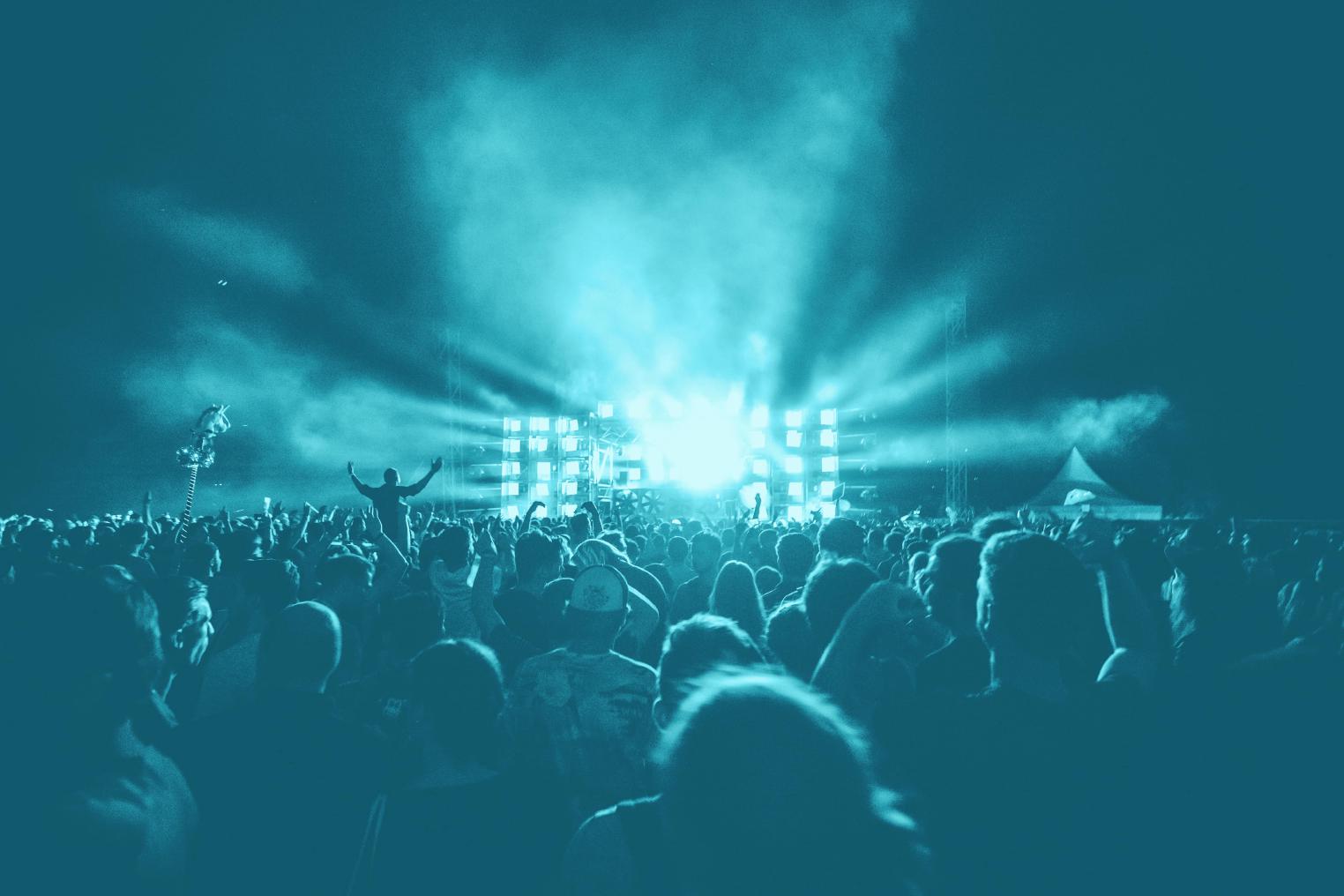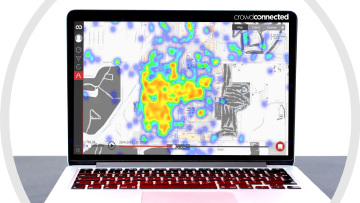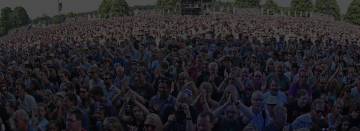The Future of Festivals in 2020

The Future of Festivals in 2020
Following the news that Amazon may be entering the music festivals market. Here are Neil Mortimer’s predictions for the future of festivals.
Today, in many ways, a festival is a simple format:
Eat Sleep Rave Repeat Find your car
Festivals will change between now and 2020.
The music will evolve.
The festival environment will evolve.
The participant experience will be different.
But how will the participant experience be different and what does this mean for festival organisers and marketers.
Prediction 1: Festivals will be used to better understand your music tastes.
Your listening habits are well known in the online world.
Whenever someone streams music, this activity is charted and logged.
Services like Spotify or Apple Music use it to pay royalties to bands & record labels, construct the charts and to recommend other music you may like.
Festivals will be no different to Spotify & Co.
Technology will help festival organisers really understand what music people enjoy “live” and their behaviour.
Where do people stand during a gig, in the mosh pit or the back.
Whether you arrived 20 minutes before the performance for your place at the pit barrier.
Whether you left after the first song or listened to the entire performance.
You will be able to gain a full 360-degree view on your audience’s behaviour.
Festival-goers will receive advanced opportunities to purchase tickets for the band they saw at the festival, performing later in the year at their local concert venue.
Read our Latitude case study and learn how the festival sponsor EE recommended similar acts for people to check out based on what they had seen at the festival.
Prediction 2: Live streaming will be more prominent.
Live streaming will never replace the full ‘live’ festival experience, but the trend will be more prominent in the future. YouTube’s live streaming capabilities allowed Coachella festival in 2016 to live stream the entire event as a launch event. This strategy strengthened the brand and extended it to a wider audience.
New streaming technology also open up additional revenue streams for promoters of sold out events.
Participants that didn’t get the chance to score a ticket for the sold-out festival will benefit from a live stream delivered to their own living room..
Prediction 3: Chatbots will be a festival’s best friend.
Chatbots are here to stay and SXSW can confirm. At this year’s edition, Eventbase have added Abby, the SXSW bot – a concept that will become prevalent in the festival industry.
Instead of looking on a map or checking a schedule, the bot will quickly answer your immediate questions.
Where is the restroom with the shortest line?
Who is next on the main stage?
Where can I find the welly shop?
A festival chatbot will allow participants to get quick and fast responses in either text or spoken words via Siri or one of her friends.
Brooke Kain of AEG Live thinks there will be a full consumer shift to mobile and bots.
“Where I’d envision it going is that a consumer would barely even have to open their app or even open their phone,” she says. “They use their phone to purchase things, the ticket’s there, it’s scanned, we know who you are, we receive beacon data, and we can offer you a personalized [food and beverage] experience based on the fact that you just walked in the venue. That kind of seamless, transparent transaction I think is somewhere we could be moving.”
Prediction 4: Mixed reality will enhance the live experience.
As innovative technology such as MagicLeap and Microsoft HoloLens evolves, mainstream mixed reality at festivals is something that could turn reality very soon.
The technologies provide additional visual layers to enhance the live performance and experience.
If people will prefer “virtual effects” instead of “traditional effects” remains to be seen, but there is definitely an opportunity.
Prediction 5: There will be more festivals.
An Eventbrite study shows that Millennials or Generation Y ( born 1977 to 1995) value experience and access over ownership:
78% of Millennials and Generation Y would rather pay for an experience than material goods. (compared to 59% of boomers (born 1946 – 1964).
To back this up, as JWT’s quantitive research into festivals highlights, 51% of Millennials go to these events “to experience something new”. 75% of Millennials go to at least one festival every year; 25% to four or more; and more than 33% have traveled internationally to visit a festival.
Steve Heap, chairman of the Event Industry Forum and general secretary of the Association of Festival Organisers says “on the whole, there are always “a few” festivals that either closedown, collapse or go bankrupt each year. “Every time one closes down, two others start.”
Globally, the UK leads the pack. Last year there were 1070 festivals in the UK listed on eFestivals When you look at the global market it is growing. Countries like USA, Canada, Germany, Sweden, Denmark, Japan, South Korea, Australia, Croatia, Spain and Portugal are all year on year increasing the number of festivals.
Prediction 6: Festivals will be a cashless experience.
Indeed cashless payment is now nothing new and many festivals have voucher-based systems.
RFID wristbands at Snowbombing since 2013 have been used for all forms of payment on the mountain and at the festival venues. At Roskilde festival no one carries cash because every bar has contactless. Apple Pay’s continued advancement may mean it is used everywhere. The format may vary but one thing’s for sure. The advantages are huge, understanding transactional data is huge for festivals. If that can be linked to the individual user then even better.
Prediction 7: The Lines will be shorter
Whether Amazon drones are flying overhead delivering orders remains to be seen. Either way it is in a festival’s best interest to ‘Load Balance’, i.e. Ensure people are aware of all of the facilities it has put in place. Location technology can be used to measure line lines across the event. So that an audience can always be aware of the restrooms with the shortest line or to avoid the bar that’s swamped because it’s closest to the main stage. By the audience having quick and easy access to knowledge, this improves the guests' experience and means the festival can be operationally optimised.
Prediction 8: Sponsors will be happier to spend bigger
A brilliant sponsor activation only adds to the festival experience. At Coachella 2016, Heineken offered a refrigerated storage area to customers camping at the festival, with a delivery service. However, Sponsors need to better understand the interactions people have with their brand. Who visited them, for how long and what did they do? The fine and granular analytic behavioural measurement available will provide sponsors with evidence of a return on their spend. They will hone their activations to maximise success. Something that would surely appeal to data hungry Amazons entry into this space.
Prediction 9: Festivals will be safer
Crowd dynamics will be better understood. By knowing where everyone is at all times, a festival can predict crowd surges at gates, react quicker and more efficiently to any problems that occur. Deploy stewards with pinpoint accuracy and replay all incidents back post event to better understand how not to replicate any issues that have occurred.
Prediction 10: You won’t lose your friends and family or your car
How long do you spend on average waiting and looking for your friends while you are at a festival?
Or wanting to ensure you know where your kids are?
These can be critical and emotional stresses which directly impact your festival enjoyment. We’ve all come back from the festival and looked at our text messages.
‘I’m by the flag with the giant pig on it being waved by the guy in a kilt’ or worse than that ‘I’m in-line with the speaker stack on the left of the stage”.
A real-time way of locating your friends, family, and car via a locational map on your phone at all times will be something you take as a festival app given.


